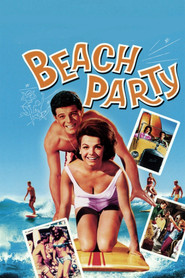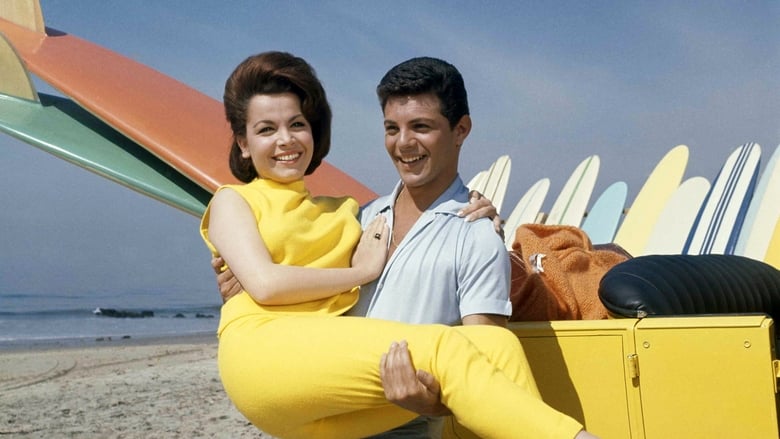“Beach Party 1963” summons waves of fun and frolic in the sun.
It’s a vibrant and lively cinematic cocktail, shaken with swinging music, eye-catching bikinis, and gleeful beach shenanigans.
Amidst the pristine sands and sizzling California rays, a group of groovy teens boogie on the beach, embodying the essence of carefree youth.
An irresistible blend of striking dance moves, wholesome romance, and comical mishaps make this flick an unforgettable party for viewers.
With catchy tunes that will make your toes tap and unforgettable characters that will leave you grinning from ear to ear, it’s non-stop entertainment that hits like a tidal wave.

CLICK HERE⭣⭣⭣🎬_Watch Beach Party 1963 English Subtitles_
Review
They were young and carefree, those beach bums of California. They lived on the shores of Malibu, where the sand was golden and the waves crashed like thunder upon the shore. It was a place for lovers and adventurers, where dreams were born and broken, just like the surf.
In this paradise, a movie named “Beach Party” was brought to life. It was a tale of romance and rebellion, set against the backdrop of sun-kissed beaches and endless parties. The plot revolved around a group of teenagers who defy authority and challenge societal norms. It was a story that mirrored the spirit of its time, capturing the essence of youth in revolt.
The news of this audacious film spread like wildfire through Hollywood. People whispered about its rebellious undertones and daring cinematography. They spoke of its fearless cast, led by Annette Funicello and Frankie Avalon, who brought their own brand of charm to the silver screen. Critics hailed their performances as groundbreaking, with Funicello’s innocence balancing Avalon’s wild spirit.
The characters in “Beach Party” were larger than life, each representing a different facet of youth culture. From the brooding surfer to the naive beach bunny, they embodied the hopes and dreams of an entire generation. Their struggles with love and identity resonated with audiences across America.
But it wasn’t just the storyline that made “Beach Party” exceptional; it was also its historical significance. Released in 1963, it marked a turning point in American cinema. With its bold portrayal of teenage rebellion and sexuality, it challenged conventional morality and pushed boundaries previously untouched.
The score for “Beach Party” was as infectious as a catchy tune played on repeat. The blend of surf rock and pop melodies had audiences tapping their feet long after they left the theater. It became an anthem for disenchanted youth searching for their own identity amidst a sea of conformity.
Filming “Beach Party” was no easy task. The cast and crew battled the relentless sun and unpredictable tides, but their perseverance paid off. The result was a visual feast for the eyes, capturing the natural beauty of Malibu’s coastline in all its glory. Each scene was carefully crafted, each shot telling its own story.
As the movie hit theaters, evaluations poured in from critics and audiences alike. Some praised its revolutionary spirit, applauding its fearless message. Others criticized its lack of depth and accused it of perpetuating stereotypes. But regardless of the opinions, “Beach Party” had ignited a spark that could not be extinguished.
Awards eluded “Beach Party,” but its impact on popular culture was undeniable. It inspired countless imitations and became a franchise of its own, spawning several sequels that aimed to capture the magic of the original film. Its influence reached far beyond the shores of California, infiltrating the hearts and minds of young people everywhere.
Cinematography played a crucial role in bringing “Beach Party” to life. Every frame was meticulously crafted, capturing the essence of California’s surf culture with stunning precision. The sweeping shots of crashing waves and sun-kissed beaches were nothing short of breathtaking.
Opinions about “Beach Party” varied like grains of sand upon the shore. Some saw it as a shallow depiction of youth culture, while others saw it as a rebellious ode to freedom. To me, it represented both – a mirror reflecting society’s values and an anthem for those yearning to break free from societal constraints.
Gossip swirled around the cast like a summer breeze. Rumors whispered about secret love affairs between co-stars, adding an air of intrigue to an already captivating story. But amidst the chatter, one quote from Annette Funicello stood out: “We wanted to show that teenagers are capable of deep emotions and complex thoughts. We’re not just mindless rebels; we’re searching for something more.”
The soundtracks of “Beach Party” captured the spirit of its time, blending surf rock with catchy pop tunes that became anthems for generations. From The Beach Boys to Dick Dale, the music accompanied the characters’ every move, lending a rhythm to their rebellious journey.
The special effects in “Beach Party” were minimal, but they served their purpose well. The crashing waves and fiery sunsets added a touch of magic to the story, transporting viewers to another world where anything was possible. It was a testament to the power of simplicity.
The development of “Beach Party” was as tumultuous as the waves crashing upon the shore. It took determination and resilience from all involved, from the director to the actors. It was a labor of love that paid off in ways no one could have predicted.
The dialogue in “Beach Party” was like poetry, capturing the essence of each character with wit and charm. Each line carried weight and meaning, painting a vivid picture of life on the California coast. It was Hemingway-esque in its simplicity yet profound in its impact.
The crews behind “Beach Party” worked tirelessly to bring this film to life. From set designers to costume makers, they poured their hearts into creating a world that felt real and vibrant. Their efforts paid off, creating a visual feast that transported audiences back in time.
Criticism found its way into “Beach Party,” as it does with any groundbreaking film. Some accused it of perpetuating stereotypes and shallow storytelling. But amidst the naysayers, there were those who saw its value – a symbol of rebellion and hope in an increasingly conformist society.
Production on “Beach Party” faced its fair share of challenges – from harsh weather conditions to budget constraints. But these obstacles only fueled the determination of those involved. They saw the potential in this film and refused to let anything stand in their way.
Editing “Beach Party” was no easy task. It required a keen eye and a delicate touch to bring out the best in each scene. The final product was a seamless blend of story and visuals, capturing the essence of youth in revolt.
In the end, “Beach Party” was more than just a movie; it was an experience. It captured the spirit of an era, carving its place in history as a symbol of rebellion and freedom. It left an indelible mark on popular culture, reminding us all that sometimes, you need to break the rules to find your true self.
Technical Data

- Release : 1963-08-07
- Runtime : 101
- Genre : Comedy, Music
- Cast : Robert Cummings as Professor Sutwell, Dorothy Malone as Marianne, Frankie Avalon as Frankie, Annette Funicello as Dolores, Morey Amsterdam as Cappy
- Crew : Clark L. Paylow as Assistant Director, Harry Reif as Set Decoration, Samuel Z. Arkoff as Executive Producer, Daniel Haller as Art Direction, Eve Newman as Music Editor
- Revenue : $2,300,000
- Budget : $300,000
- Company : Alta Vista Productions, American International Pictures
- Popularity : 4.287
- Summary : Anthropology Professor Robert Orwell Sutwell and his secretary Marianne are studying the sex habits of teenagers. The surfing teens led by Frankie and Dee Dee don’t have much sex but they sing, battle the motorcycle rats and mice led by Eric Von Zipper and dance to Dick Dale and the Del Tones.
- Tagline : Surfs up and the Beach is really swinging!
